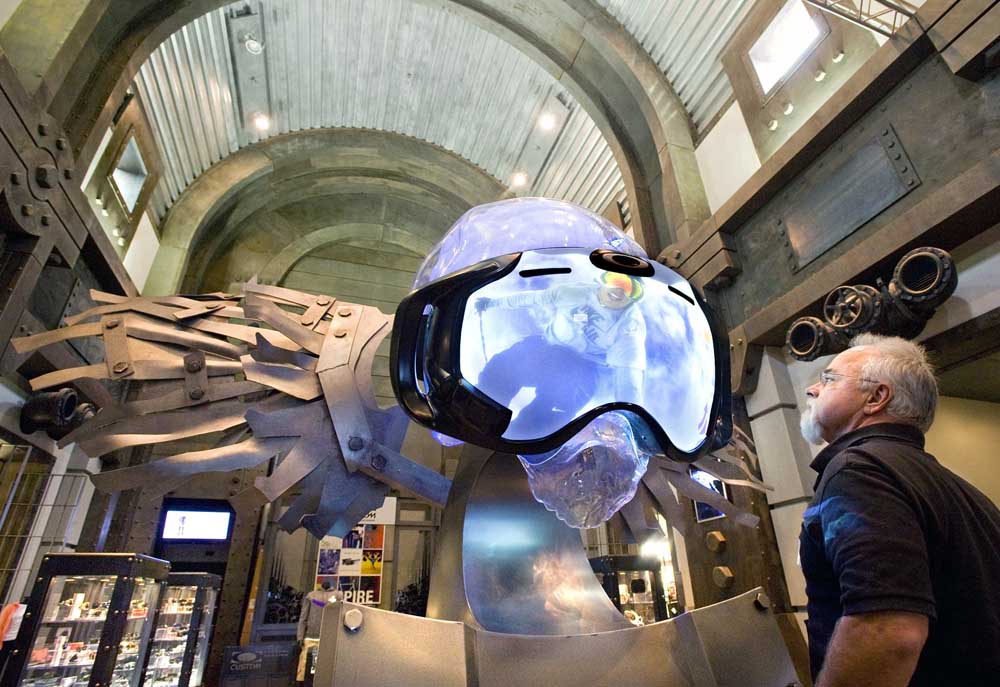Retailers try to entice shoppers with a visual hook
Published 12:00 am Wednesday, January 22, 2014

- Vendor Eric Mihalik watches an interactive display while waiting in the lobby of Oakley corporate headquarters. The display informs potential customers about specialty goggles that are equipped with a heads-up display and onboard sensors. H. Lorren Au Jr. Orange County Register
At the Oakley headquarters in Foothill Ranch, Calif., a goggled, transparent skull with a 15-foot wingspan and glowing blue brain looms over the entrance of the retail area. The performance activewear and accessories company erected the interactive display, which stands 9 feet tall, in all Oakley store windows in November to showcase the new Airwave snow goggles.
“It’s meant to stop people in their tracks,” said R.J. Abbott, Oakley’s director of global visual merchandising, who came up with the concept. “We’re trying to be 10 steps ahead, and disruptive by design. If it doesn’t hit customers on that visceral level, we move on.”
Oakley’s investment in its window displays is part of an overall effort to enhance the in-store brand experience, and an example of how retailers are adapting in a world where brick-and-mortar shops must be more than a place to buy products.
“There’s a lot of evolution going on in consumer behavior that retail is going to have to embrace,” said Bill Martin, founder of analytics firm ShopperTrak, which tracks metrics like in-store foot traffic. “The number of people going to the mall hasn’t declined, but store traffic has declined because people are visiting fewer stores.”
In 2007, shoppers visited five stores on average during every trip to the mall. Now it’s closer to three stores, because an estimated 70 percent of those consumers are researching purchases online, narrowing the opportunity for browsing and impulse buys.
“Retailers are going to have to get a little more creative to draw people in, but traffic numbers will return if they do,” Martin said.
To grab attention, retailers are showcasing works by famous artists, investing in music playlists that enhance a brand’s ambiance, and installing customized flooring, dramatic lighting and even design-oriented fixtures that can display products to their best advantage.
“Brick-and-mortar stores function like a store’s business card, and the focus is trending toward storytelling more than featuring products,” said Davide Cremese, director of North American operations of retail design agency Alu. His firm hosts cutting-edge retail design show ROAD (beginning next week in San Francisco), and has partnered with companies such as Bloomingdale’s, Chanel, General Motors and Bank of America.
Oakley’s strategy doesn’t stop after visitors cross the threshold. Stores are designed with an “interior window” in the first 10 to 15 feet for customers to engage with featured products, often involving interactive video and digital screens. “Otherwise you’ve brought them in and lost them,” Abbott said. “Online is an incredible sales tool, but the store still holds a key part in the whole brand identity where customers can engage with the brand on a different level than they would with the website.”








